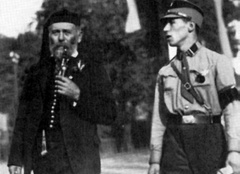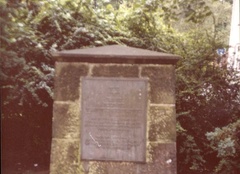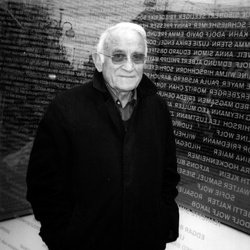Hameln
English: Hamelin
Jews were first documented in Hameln in 1277 when only 10 Jewish families lived in the town. During the Middle Ages most Jews earned their living as moneylenders, a profession Christians were not allowed to practice because it was considered a sin to charge interest. The Jewish population continued to grow and in 1344 the small community built its first synagogue. However, only a few years later, around 1349, this initial community was destroyed as Jews were persecuted and murdered during the Black Death.
Over the next two centuries only a few individual Jews settled in Hameln. It was not until 1552 that the Jewish population grew large enough for a recorded mention of a “Jewish Street” in the community.
In 1590 Duke Henry Julius issued a decree banning all Jews from provinces under his control. The Hameln town council chose to defy this order, claiming their own right to control the Jewish population. However, the Jewish businesswoman and diarist Glückel of Hameln mentioned in her memoirs that only two Jewish families remained by 1660.
After a petition to the Emperor the Duke’s order was repealed, allowing the Jewish community to start slowly increasing in number by the late 1600s. In 1743 a new cemetery was consecrated and a resident rabbi was appointed to the town in 1782.
Over the next 60 years, the size of the community fluctuated from approximately 12 Jewish families in 1777, to 5 Jewish families in 1814, and then 10 Jewish families by 1830. A Jewish school was established in 1832 and the community came under the jurisdiction of the rabbinate of Hanover. In 1879 the community dedicated a new synagogue, but only four years later the building was seriously damaged in an antisemitic attack.
Despite this incidence of violence, the Jewish community of Hameln continued to grow, reaching its peak of 237 members in 1902. After the Nazi Party rose to power in 1933, the remaining 136 Jews of the community faced more and more attacks. Many Jewish-owned businesses were vandalized. By 1935 only 86 Jews remained in the town when the synagogue was again attacked in an attempted arson. The synagogue was finally destroyed after a third attack during Kristallnacht, the Night of Broken Glass, in November 1938. The Jewish cemetery was also desecrated.
By the end of 1938, 10 Jews in Hameln were sent to the Buchenwald concentration camp, where two would ultimately be killed. By 1942 the 44 remaining members of the Jewish community were deported with 13 sent to the Theresienstadt ghetto outside Prague. In total, 101 Jews from Hameln perished under Nazi rule.
Hameln: Photographs & Artifacts
-
 An SA officer next to a man in traditional dress, prewar. Credit: Yad Vashem
An SA officer next to a man in traditional dress, prewar. Credit: Yad Vashem -
 A monument in memory of the Hameln synagogue destroyed on Kristallnacht. Credit: Yad Vashem
A monument in memory of the Hameln synagogue destroyed on Kristallnacht. Credit: Yad Vashem


